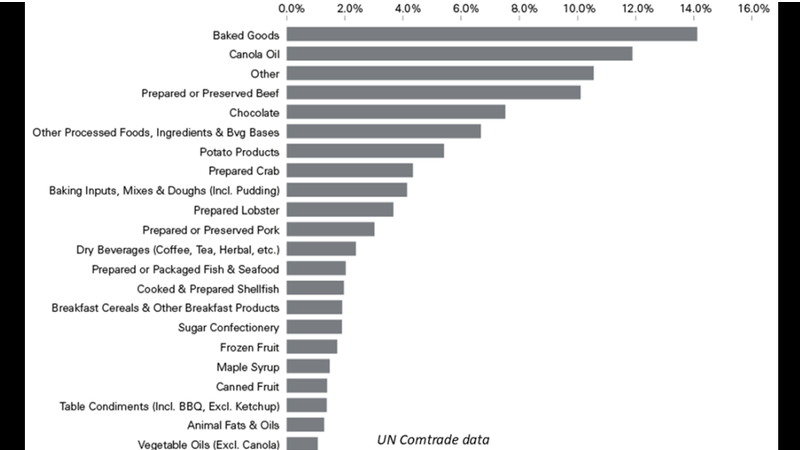
Opportunities in food exports, says Farm Credit Canada
Farm Credit Canada is touting the food and beverage processing industry as one of the country’s biggest opportunities for growth in global trade.
In 2019, Canada’s total food, beverage and commodity exports were worth roughly $67 billion, an increase of almost 10 per cent since 2015, states a release from FCC. Food exports increased by 27.8 per cent. Food and beverage exports represented less than half (45.5 per cent) of the total value of the country’s agriculture, food and beverage exports.
Canada’s agri-food industry has so far been able to adjust to COVID-19 challenges and meet the needs of Canadian and export customers, yet the disruptions to global food supply chains and trade caused by the pandemic underscore the need for Canada to diversify its export markets and seize related growth and diversification advantages.
“World population growth, higher purchasing power in emerging markets and new trade agreements are key factors in potentially creating more opportunities for Canada to increase exports,” said J.P. Gervais, FCC chief agricultural economist, in releasing this year’s trade report, titled Opportunities and Challenges to Diversify Canada’s Food Exports. “Combined with our competitive advantages in natural resources and innovation, and a stellar food safety reputation, Canada has an opportunity to improve its world standing as a major food exporter, as well as to diversify its export markets,” Gervais said.


